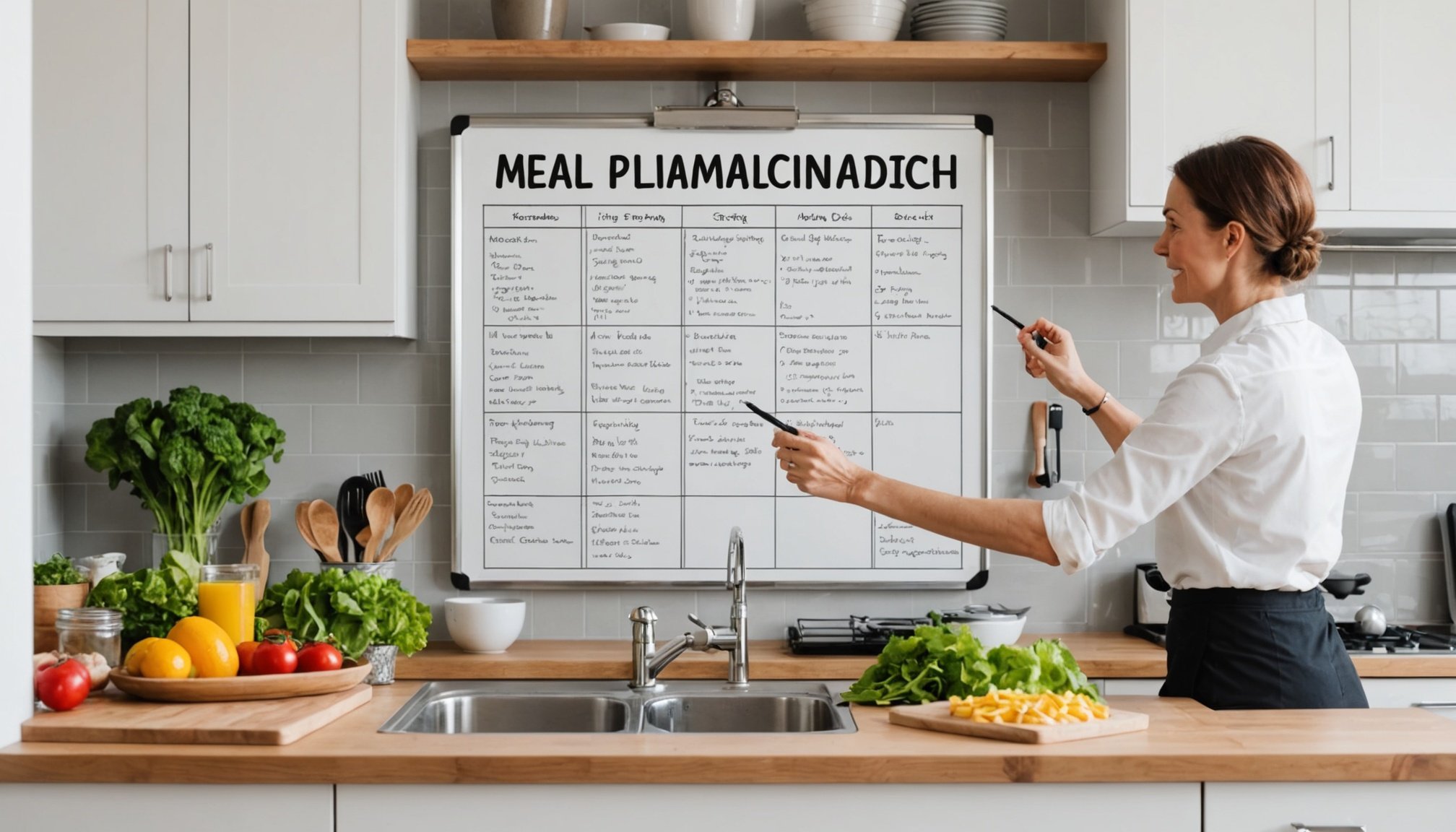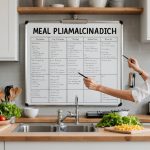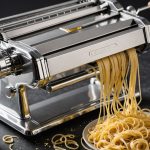Are you struggling to maintain a slim diet amidst the chaos of daily life? A meal planning whiteboard can be a game changer. It offers a visual, organized way to plan your meals, simplifying grocery shopping and reducing food waste. By having your meals mapped out, you not only save time but also stay committed to your dietary goals. Discover how this simple tool can transform your kitchen experience and make healthy eating easier than ever.
Benefits of Meal Planning for Slim Diets
Meal planning offers numerous benefits for those pursuing a slim diet. It plays a pivotal role in supporting weight loss goals by ensuring that meals are nutritionally balanced and portion-controlled. When you engage in weight loss meal prep, you are more likely to stick to your dietary objectives, reducing the temptation to indulge in unhealthy snacks or takeaways.
Also to discover : Optimal Kitchen Seating Solutions for Promoting Mindful Eating Practices
The psychological benefits of structured meal planning should not be underestimated. Knowing what you will eat each day can alleviate stress and decision fatigue, making it easier to adhere to your slim diet. This structure provides a sense of control and accomplishment, which can be motivating and empowering.
Nutritionally, preparing meals in advance ensures that your diet is rich in essential nutrients while maintaining a calorie deficit necessary for weight loss. By planning, you can incorporate a variety of foods that supply the necessary vitamins and minerals, enhancing the overall quality of your diet. Furthermore, meal planning allows for better management of portion sizes, which is crucial for effective weight management.
Also to read : Smart Kitchen Layout: How Strategically Placing Your Main Work Area Can Curb Overeating
By embracing the advantages of meal planning, individuals can create a sustainable and enjoyable approach to achieving their weight loss goals.
Utilizing a Meal Planning Whiteboard
A meal planning whiteboard can revolutionise your approach to meal prep, offering a clear, visual representation of your weekly meals. This tool aids in maintaining kitchen organization, ensuring that your dietary goals remain in focus. By displaying meals prominently, it becomes easier to adhere to your slim diet plan.
Features and Benefits
- Visual Clarity: A whiteboard provides an at-a-glance overview of your meal schedule, reducing decision fatigue.
- Flexibility: Easily update and adjust your meal plans as needed, accommodating changes in your schedule or preferences.
- Organisation: Keeps your kitchen organised by listing ingredients needed for each meal, streamlining grocery shopping.
Setting Up Your Space
To create an effective meal planning area, position your whiteboard in a highly visible location in the kitchen. This could be on a wall or the refrigerator door. Use different coloured markers to distinguish between meals, snacks, and reminders, enhancing visual appeal and clarity.
Writing and Updating Plans
When writing your meal plans, ensure they are detailed yet flexible. Include portion sizes and nutritional information to stay aligned with your weight loss goals. Regularly update the board to reflect any changes, keeping your meal planning dynamic and responsive to your needs.
Practical Steps for Effective Meal Planning
Creating a weekly meal plan using a whiteboard can be a game-changer in achieving your dietary goals. Begin by dedicating time each week to plan meals. Meal prep steps start with assessing your nutritional needs and preferences. Consider incorporating a variety of foods to ensure a balanced intake of essential nutrients.
To enhance your planning, break down the week into categories like breakfast, lunch, dinner, and snacks. This meal organization tip helps maintain clarity and ensures no meal is overlooked. Use your whiteboard to visually map out these meals, making adjustments as needed to accommodate changes in your schedule or preferences.
Incorporating variety is crucial for both nutrition and enjoyment. Rotate different protein sources, vegetables, and grains throughout the week. This strategy not only keeps meals exciting but also ensures a broad spectrum of nutrients.
When it comes to grocery shopping, list ingredients based on your meal plan. This approach streamlines shopping, reduces waste, and ensures you have everything needed for the week. Stick to your list to avoid impulse buys, keeping your diet on track. By following these meal prep steps, you can create a sustainable and effective meal planning routine.
Meal Ideas for Slim Diets
When it comes to crafting a slim diet, having a repertoire of healthy meal ideas is essential. This not only keeps your diet varied and exciting but also ensures you're getting the necessary nutrients without excess calories.
Breakfast
Start your day with a nutrient-dense breakfast such as an oatmeal bowl topped with fresh berries and a sprinkle of flaxseeds. This combination is rich in fibre and antioxidants, providing a satisfying and energising start to your day.
Lunch
For lunch, consider a quinoa salad packed with colourful vegetables like bell peppers, cucumbers, and cherry tomatoes. Add a source of lean protein, such as grilled chicken or chickpeas, to make it a balanced meal.
Dinner
Dinner could feature a stir-fry with a variety of vegetables, tofu, or lean beef, seasoned with low-sodium soy sauce. Serve it over a small portion of brown rice or cauliflower rice to keep the meal low in calories but high in flavour.
Snacks
For snacks, opt for Greek yoghurt with a handful of almonds or carrot sticks with hummus. These options are not only nutritious but also help keep hunger at bay between meals.
Meal Prepping
Batch cooking these slim diet recipes can save time and ensure you always have healthy options available. Preparing meals in advance allows you to stick to your dietary goals with ease.
Organization Tips for Your Kitchen
Achieving cooking efficiency begins with a well-organized kitchen. Start by categorising your kitchen tools and ingredients. Store frequently used items like pots, pans, and utensils within easy reach to streamline your meal prep process. Group similar ingredients together, such as spices or baking goods, to reduce time spent searching.
Meal prep storage solutions are essential for maintaining order. Invest in stackable containers to maximise space in your pantry and refrigerator. Label each container with contents and dates to ensure freshness and reduce food waste. This practice not only aids in kitchen organization but also enhances the longevity of your meal prep efforts.
Implement time-saving techniques to further boost efficiency. Pre-chop vegetables and portion out proteins as soon as you return from grocery shopping. This proactive approach saves time during the week and encourages healthier eating habits. Consider using clear storage bins to quickly identify ingredients, making cooking and prep faster and more enjoyable.
By focusing on these organization tips, you can create a kitchen environment that supports your slim diet goals, making meal preparation a seamless and efficient part of your daily routine.
Success Stories and Testimonials
Real-life experiences of individuals who have embraced meal planning highlight its transformative potential. Many have embarked on weight loss journeys and achieved remarkable results by incorporating structured meal preparation into their routines.
Consider Sarah, who struggled with weight management for years. By committing to a meal planning regimen, she not only lost 20 pounds but also gained confidence in her ability to maintain a healthy lifestyle. Her testimonials underscore the importance of consistency and the support of a meal planning whiteboard in staying organised.
Another success story is John, who discovered that writing out his meals in advance reduced his reliance on fast food. He shares that the visual clarity provided by his whiteboard helped him identify nutritional gaps in his diet, allowing for more balanced meals.
These stories offer valuable insights. Successful meal planners often recommend starting small, gradually incorporating more complex recipes as confidence builds. They also stress the importance of flexibility, suggesting that plans should adapt to life's unpredictabilities.
By learning from these experiences, others can harness the power of meal planning to achieve their dietary goals, making the journey not only effective but also enjoyable.
Visuals and Samples for Engagement
Incorporating visual aids into meal planning can significantly enhance engagement and adherence to dietary goals. Visuals make it easier to absorb information quickly, reducing the cognitive load involved in planning meals.
Examples of Meal Planner Layouts
Meal planner visuals can vary from simple weekly grids to more intricate designs incorporating nutritional information. For instance, a weekly grid layout allows for a clear overview of meals, while a more detailed planner might include sections for ingredients and portion sizes. These layouts help individuals stay organised and motivated.
Creating Engaging Meal Plans
To create a visually appealing meal plan, consider using colour-coded sections. This method not only distinguishes between different meals but also adds an element of fun. Incorporate images or icons representing food items to make the planner more relatable and engaging. A balance of aesthetics and functionality ensures the meal plan is both practical and enjoyable to use.
By leveraging these visual aids, individuals can transform their meal planning process into an interactive and motivating experience. This approach not only aids in maintaining a slim diet but also encourages a more mindful relationship with food.
Maintaining Long-term Meal Planning Habits
Developing sustainable meal planning practices is essential for achieving long-term diet success. To keep meal planning consistent, it's crucial to establish a routine that fits seamlessly into your lifestyle. Start by setting aside a specific time each week for planning and prepping. This habit formation can streamline the process and make it a regular part of your schedule.
Adapting meal plans to seasonal changes and personal preferences is another key strategy. As seasons shift, so do the availability and variety of fresh produce. Incorporate these changes into your meal plans to keep them exciting and nutritionally diverse. Adjusting recipes to match your evolving tastes ensures that you remain engaged and motivated.
Tracking progress is vital for maintaining long-term success. Regularly review your meal plans and dietary achievements. This practice allows you to identify what works and where adjustments are needed. By doing so, you can refine your approach, ensuring it aligns with both your nutritional goals and lifestyle.
By embracing these strategies, you can cultivate a meal planning routine that supports your dietary objectives and adapts to life's changes, fostering a sustainable and enjoyable path to long-term success.











